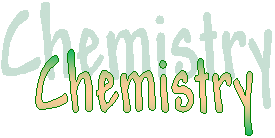|
Title:
Density of Marbles and Other Objects
Purpose:
- to determine
the density of several objects
- to use the water
replacement method to determine volume
- to use a balance
to determine mass
Materials:
- cylindrical objects
- spherical objects
(marbles)
- irregular objects
Procedure:
- Be careful
when placing samples into glass graduated cylinders
- Using the balance,
determine and record the mass of each samples (to within 0.01 g)
- Fill the graduated
cylinder with about 8 ± 1 mL water
- Tap the cylinder
gently to make sure that no air bubbles are stuck to the sides
- Read the water
level on the graduated cylinder to ± 0.1 mL and record
- Carefully place
one of the objects into the cylinder
- Reread the
water level and record
- Remove the
item and water
- Repeat steps
2~7 for the remaining objects
- Clean up and
dry all equipment and materials
Results:
(Observations and data~~~data charts and graphs and calculations
where appropriate. Organization is necessary)
DATA:
Results should be recorded in a data table similar to the following:
(USE A RULER: NEATNESS
COUNTS)
| Object |
Mass
(g) |
Water level
without object
A
|
Water
level with object
B |
Volume
of Object
(B - A) |
|
marble
1
|
g |
mL |
mL |
mL |
|
marble
2
|
g |
mL |
mL |
mL |
|
plastic
cylinder
|
g |
mL |
mL |
mL |
|
etc
|
g |
mL |
mL |
mL |
CALCULATIONS:
Notice that the
calculations below are organized in a very specific pattern.
- Make everything
NEAT, CLEAN, and LOGICAL
- Record the calculations
in data chart format!
- Determine
the Volume of each object and record in data chart above
- Compute
the density of each object (use the formula D = m/V)
- Compute
the average density of each type of item:
- Gather data
from classmates if necessary
- Avg Density
(g/mL) = [sum of all densities (g/mL)] / number of objects tested
- Compute the
percent error for each type of object
- obtain the
actual value (A) from the teacher
- use your average
density values as the observed values (O)
- Record the
results in a data chart (Example follows)
|
Name
of Object
|
Number
of Objects Tested
|
Average
Density (g/mL)
|
Actual
Density Value |
Percent
Error
(A - O/A) x 100
|
|
brass
cylinders
|
3
|
9.35
|
|
.....
|
|
glass
marble
|
5
|
.....
|
|
.....
|
|
etc
|
#
|
......
|
|
.....
|
Discussion:
- Summarize what
you did
- Discuss sources
of error....(This error analysis is one of the most important portions
of a lab activity.
- For this
lab, list all possible sources of error which you cannot control
in your procedure, observations, and measurements.
- DO NOT include
computational or performance errors such as not pressing the right
calculator buttons, misreading instructions, misreading your data
table, your lab partner....these are controllable!)
- Describe the
limitations of this method: what types of objects/substances could
not have their densities determined using the water replacement method?
- Comment on the
accuracy and precision of the volume measurement made in the 10 mL
graduated cylinder vs. the 25 mL graduated cylinder.
Conclusion:
(A one sentence testable statement that follows from your
results, what you did, what you observed)
for this lab you
may want to compare the density values of different objects
Reflection:
(A personal statement about the activity, whether it relates to "real
life," whether you liked it, suggested improvements.....)
|
